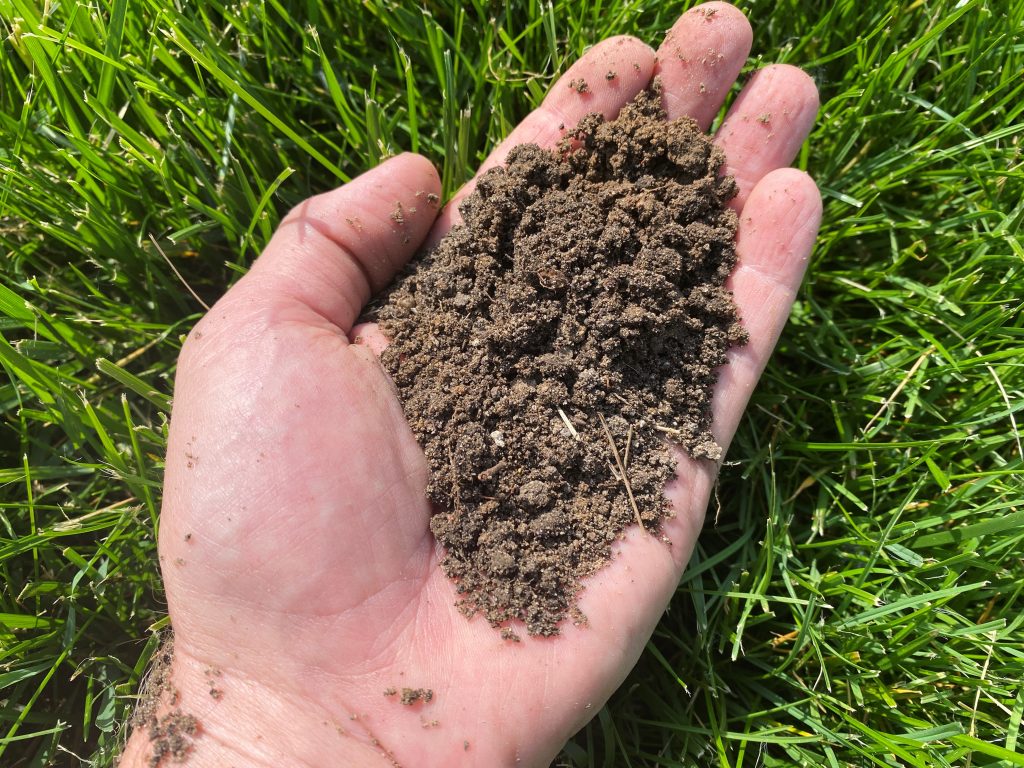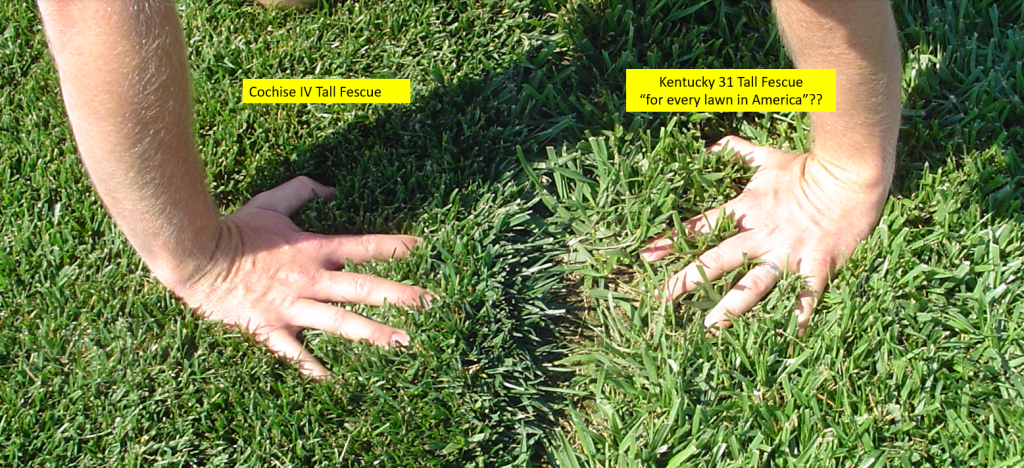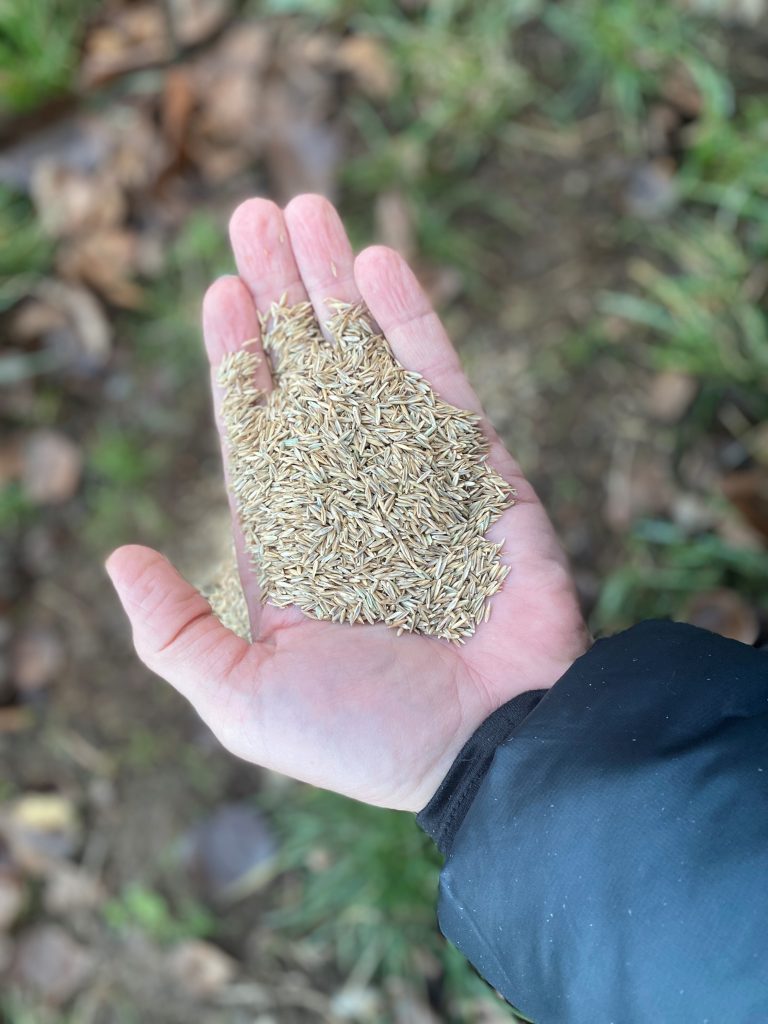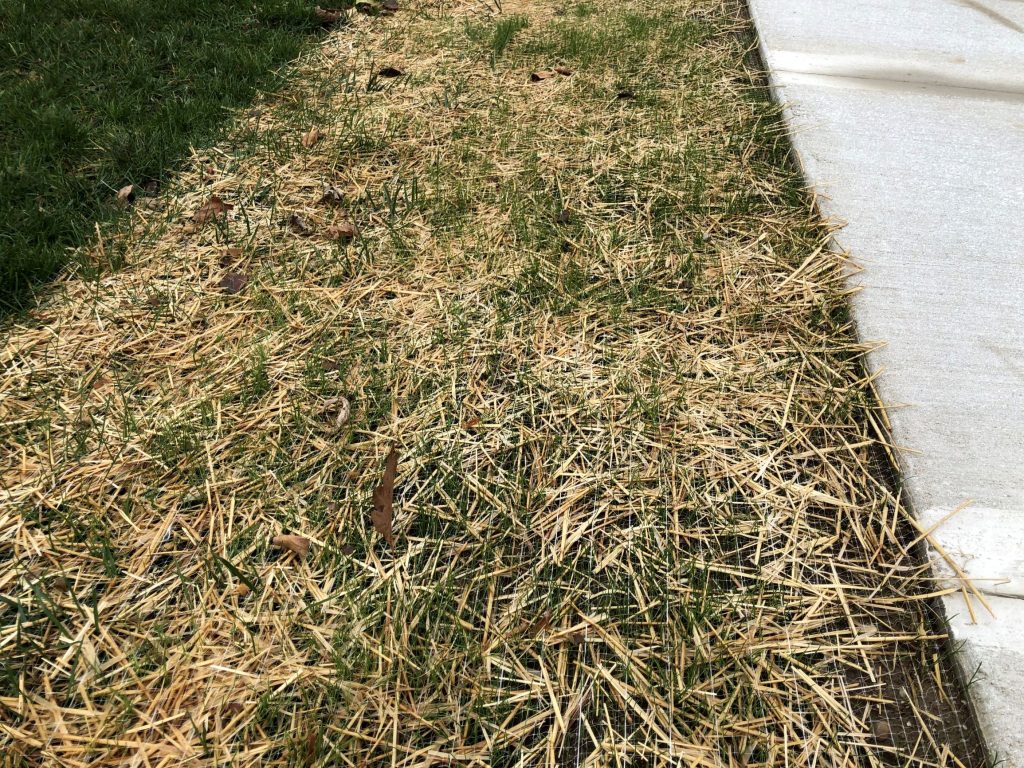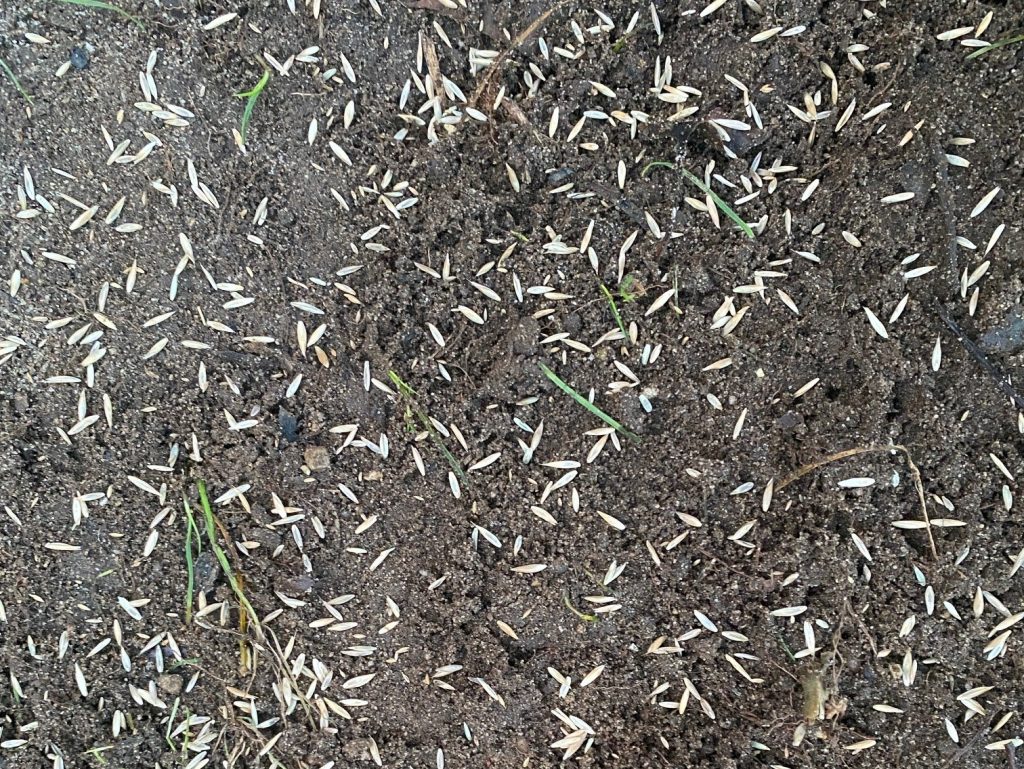
Testing your soil is the foundation for starting a healthy lawn. If you’ve not taken that step, you can find the article here. When your pH is in shape, your soil is ready and able to perform.
So what’s next? You will prepare the area for planting grass seed.
Prepare the Seed Bed by Working Up the Soil and Adding Amendments
There are two options here – starting a brand new lawn OR overseeding an existing lawn. We cover both below:
1. Starting a Brand New Lawn
If you’re starting a NEW lawn, or reseeding a very large area, till the soil to about 3 inches deep. Rake the area to get it fairly smoothed out. Then apply whatever soil amendments were recommended. For example, if your soil test showed you need to add lime, add the recommended amount now.
Now is also a good time to apply starter fertilizer. Starter fertilizer should contain a high level of phosphorus (that’s the middle number on the fertilizer bag) to encourage seed germination. Just go ahead and spin this right on top of the ground according to the recommended rates using a broadcast spreader.
Rake the lime and starter fertilizer into the soil. Make sure the area is pretty smooth and then use a lawn roller to firm up the seed bed. This is important so that you can identify any soft spots that may be hiding out under the topsoil.
When the soil is firm enough, you can walk across it without sinking in over a 1/4 of an inch and you should be able to bounce a basketball on it.
2. Overseeding an Existing Lawn
If you’re overseeding an EXISTING lawn, then aeration is a very important first step for successful lawn establishment. No need for a tiller here.
Aeration breaks up compacted soil, allows your lawn to “breathe,” gives your roots a chance to go deeper into the soil profile, helps break up the thatch layer on the surface, and helps water drainage.
There is no downside to aeration. When aerating your soil, be sure you are pulling plugs, not just poking holes in the soil. When you think you are done, do it one more time!
You should be able to rent a good plug aerator at your local rental shop.
After you aerate your soil, just go ahead and spin your starter fertilizer right on top of the ground according to the recommended rates.
At this point, you’re almost ready to plant your grass seed. But first, you’ll need to know what to plant and what NOT to plant.
Review – For starting a new lawn:
• Till the soil.
• Rake until smooth.
• Amend with lime if needed.
• Fertilize with starter fertilizer.
• Rake lime and fertilizer in.
• Roll to firm.
• Bounce a basketball to be sure it’s firm enough to plant seed.
Review – For seeding into an existing lawn:
• Aerate the lawn.
• Aerate again.
• And when you think you’ve aerated enough, aerate again.
• Amend with lime if needed.
• Fertilize with starter fertilizer.
